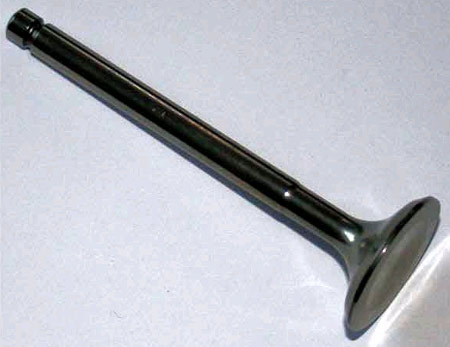Choosing valve materials
 The question of valve material selection has been discussed before in the RET-Monitor. Much of the motivation for a given selection is provided by the operating conditions in which the valve must operate. Some materials are not suited for very high temperature use while others are too dense to be used in conjunction with very extreme valve lift profiles. In previous articles, we have looked mainly at the different classes of
The question of valve material selection has been discussed before in the RET-Monitor. Much of the motivation for a given selection is provided by the operating conditions in which the valve must operate. Some materials are not suited for very high temperature use while others are too dense to be used in conjunction with very extreme valve lift profiles. In previous articles, we have looked mainly at the different classes of
material with a view to having the valves made in a certain homogenous metallic alloy.
If the parts of the valve are studied in isolation, we might choose to make some parts in different materials to achieve optimum performance. To an extent, through the use of coatings, we are already able to place a different material at the surface of the valve for tribological reasons, and it has been possible for many years to provide hard-wearing valve tips using materials such as 'stellite'.
There are manufacturing techniques applied to valves that can offer different properties in the head and stem. Production methods such as stem extrusion and head forging (upsetting) provide different levels of work and grain orientation in the stem and head. However, through the use of techniques such as friction welding, we can produce the head and stem in different alloys of a given type of material. Indeed, this technique is often used to provide hard-wearing valve tips.
The friction welding process is widely used in industry, but it is generally for ease of manufacture rather than a method for joining dissimilar material grades. There are instances where the technique is used for aerospace and nuclear applications to join materials that differ widely in nature, such as aluminium and steel. The technique is clearly very versatile and can also be used to produce excellent bonds between similar materials, such as different alloys of a given basic material or some more widely differing material pairs. Titanium is an obvious application for such a technique, where a 'stem alloy' could be joined to a 'head alloy' with ease.
Most of the deflection in a valve is in the stem, so naturally we might choose to use a material with the highest possible modulus here, and pay less attention to the density. The head of the valve could be made from an alloy selected for a combination of low density and other properties such as temperature resistance.

While there isn't a great deal of difference between many of the suitable titanium alloys in terms of the properties that we might choose to optimise for our valve, there is the opportunity to join titanium to other materials. We might for example, if the rules pertaining to our race series allow, join a titanium valve head to a titanium aluminide stem (or vice versa). At the moment, titanium aluminide is still a very expensive material, and the manufacture of whole valves from this material would be comparatively costly. However, most of the gain might be realised at significantly lower cost if only part of the valve were to be made from it.
The technique is cost-effective enough for it to be used for the manufacture of some steel racing valves, with a higher-grade material being used for the valve head.
Fig. 1 - Friction welding is used to provide economical valves by using expensive materials only where they are really needed
Written by Wayne Ward